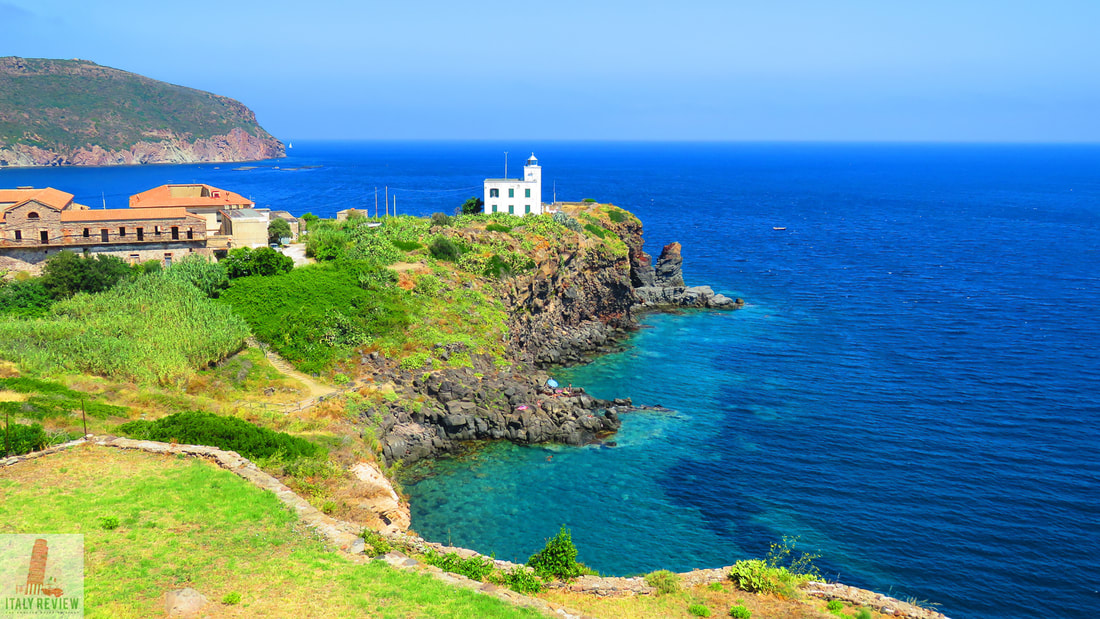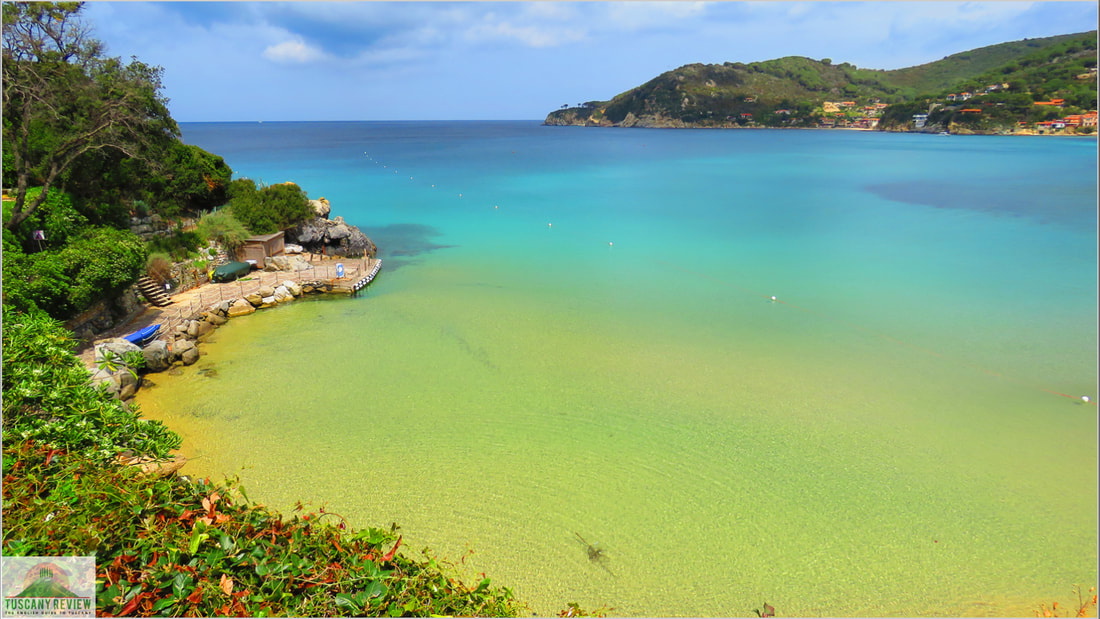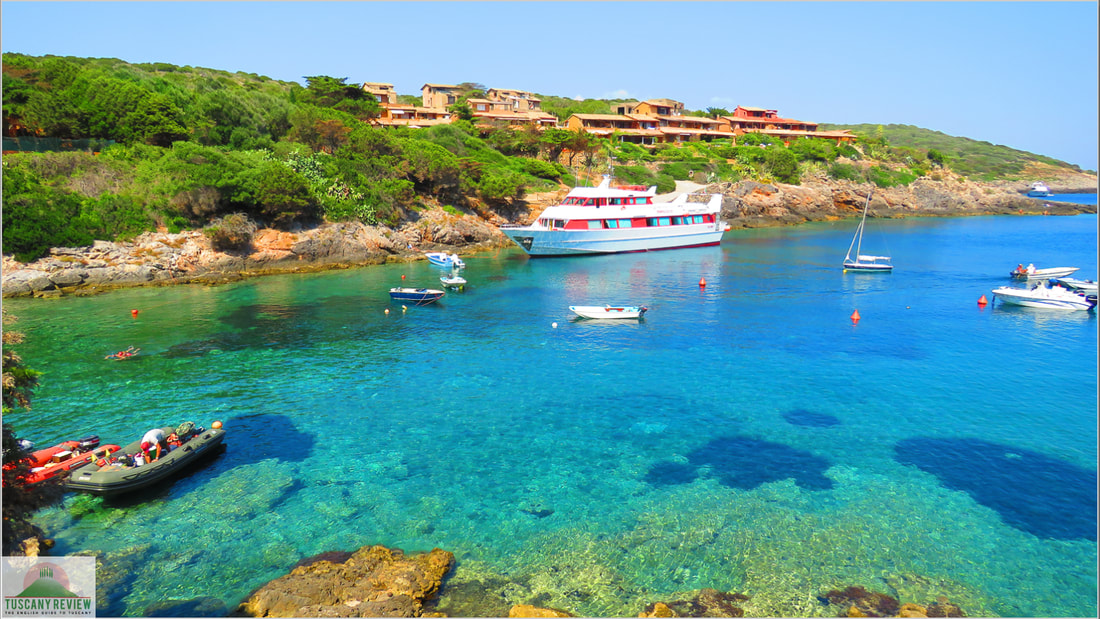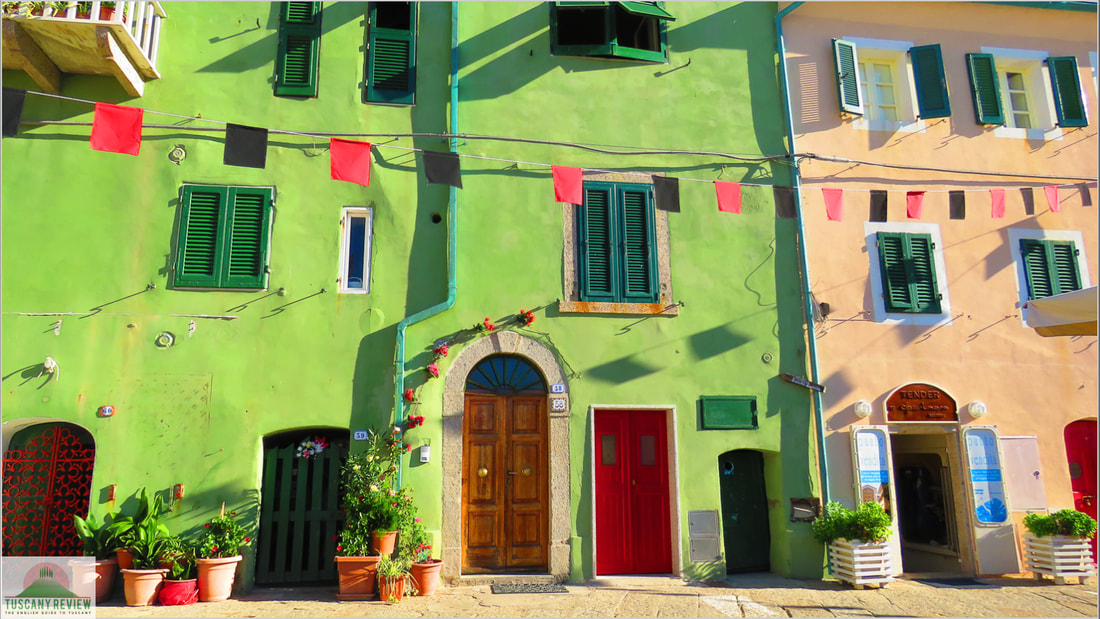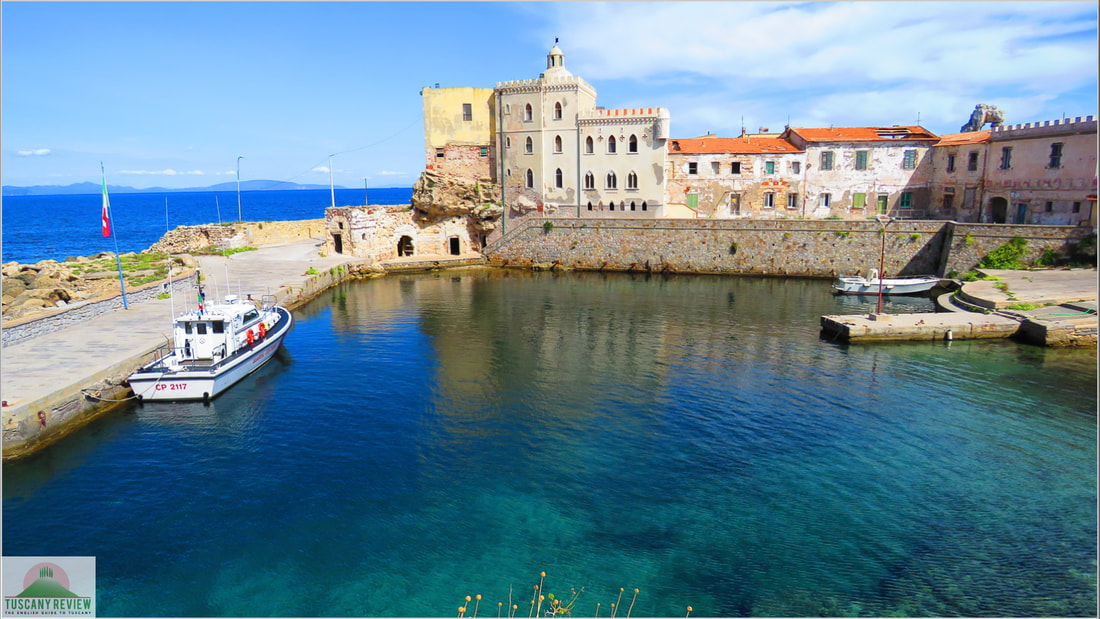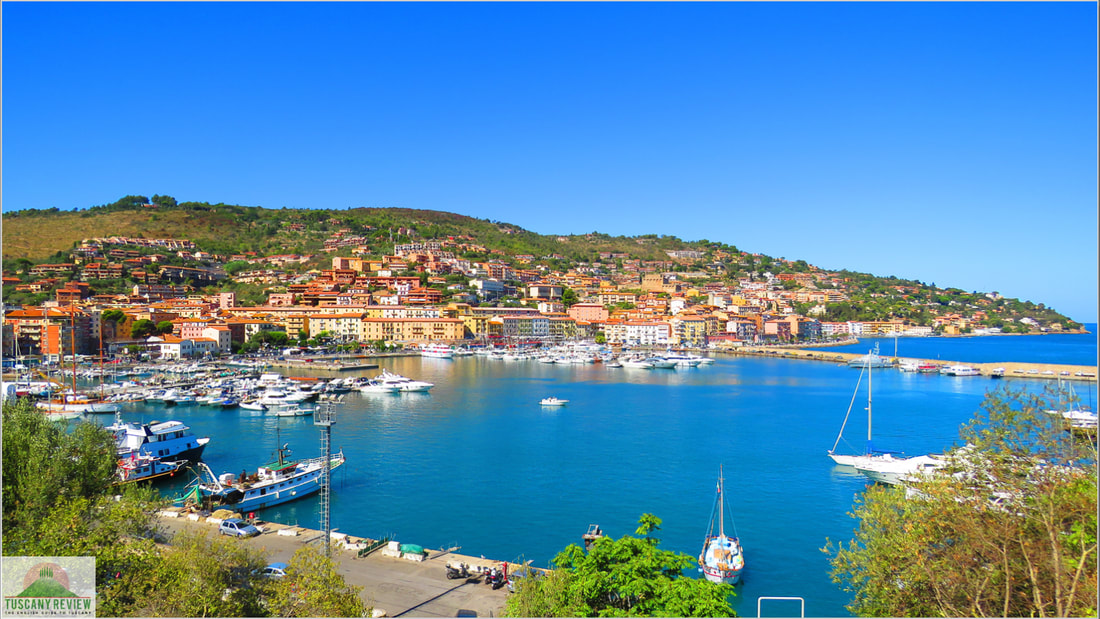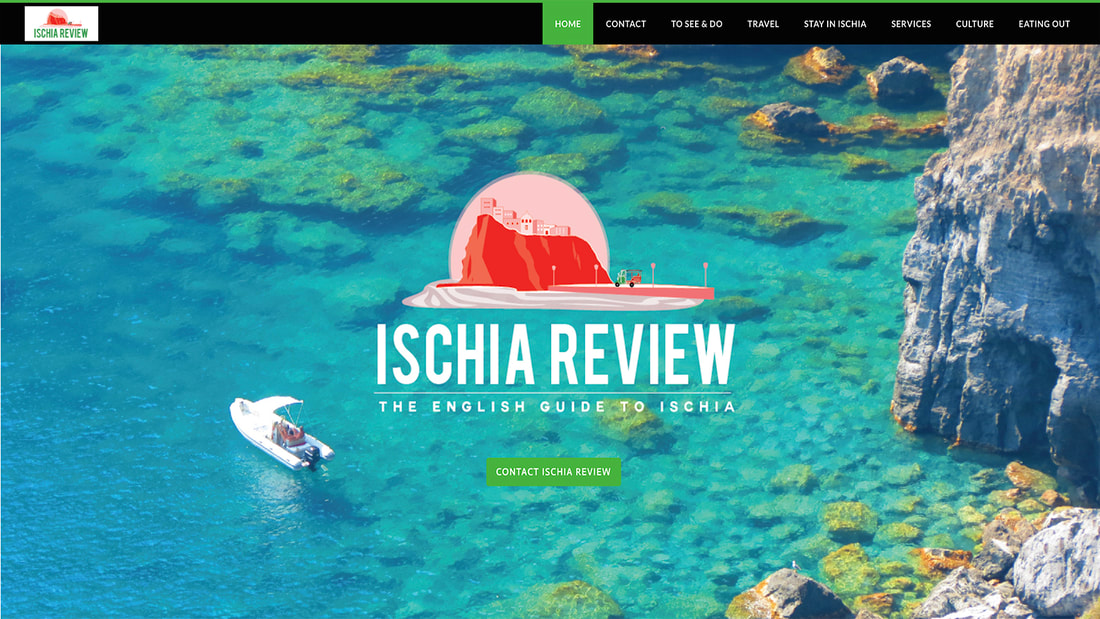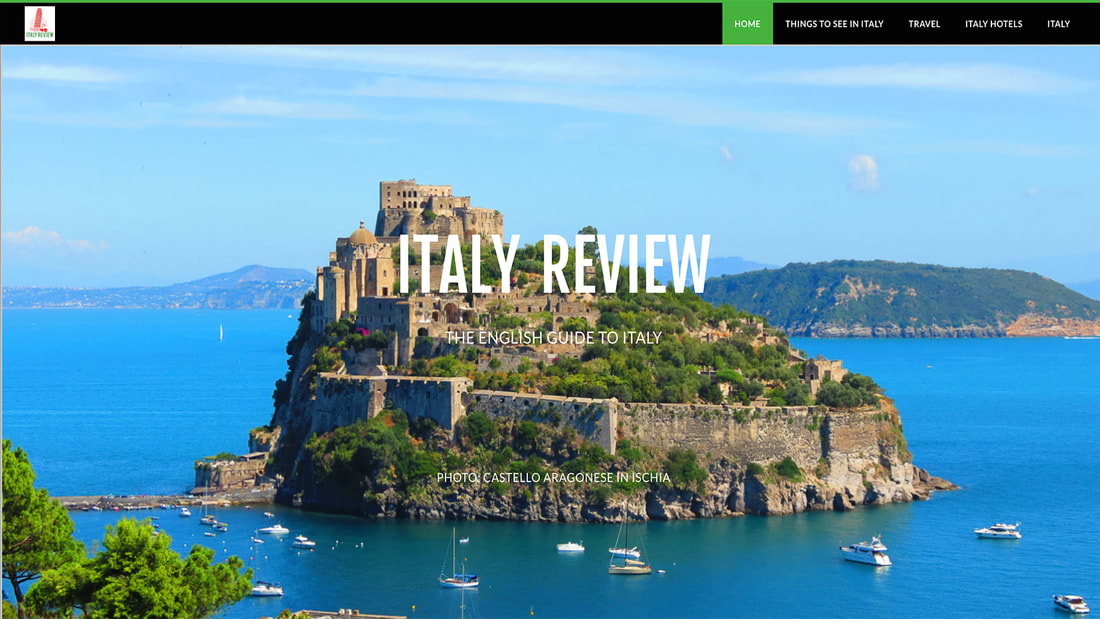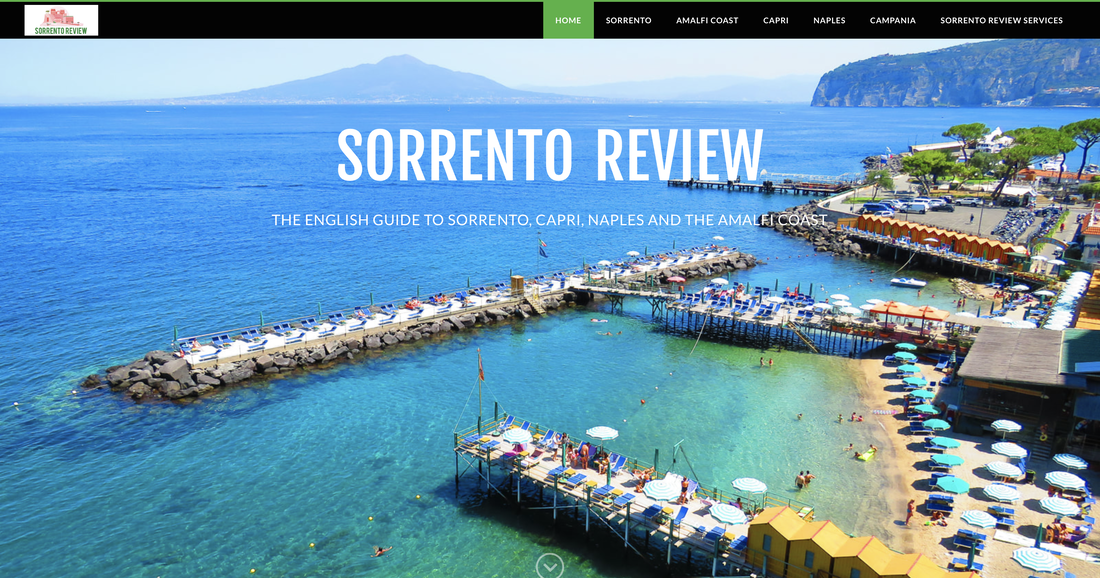Tuscan Archipelago Ferry Timetables
Latest update: 18 February 2024
|
The Tuscan Archipelago ferry timetables detail the complex set of routes for the islands and the mainland ports from which they can be reached.
Situated just off the coast of Tuscany, the Tuscan Archipelago is a group of seven islands, split between the Tyrrhenian Sea and the Ligurian Sea. It's an area of outstanding natural beauty, protected as one of the national parks of Italy, and boasting a wide variety of marine life where dolphins and whales roam freely. Only five of the seven islands can be accessed without special permission, with the two off-limits being Gorgona and Montecristo. |
Related links
Ferries and hydrofoils to Elba
Of the five islands that it's possible to visit, the most famous and the most popular is Elba. The island's name is forever associated with Napoleon Bonaparte who was exiled here in 1814 before escaping a year later. Interesting though it is, the island doesn't need the association with Napoleon to sell itself, as it's one of the most outstanding holiday destinations in Italy with more than eighty beaches, a good selection of towns and villages, great accommodation options and well-established transport facilities.
Elba has six different ports that can be used either to reach the Tuscan mainland ports or to sail to some of the smaller islands in the archipelago. The most popular route in and out of Elba is between the ports of Piombino on the mainland and Portoferraio, the capital of Elba, with in excess of forty daily crossings in each direction available at the height of summer. A choice of vehicle and passenger ferry or foot passenger only hydrofoil is available along the main routes, with the ferries generally a bit cheaper and the hydrofoils slightly faster.
The shortest route into Elba is from Piombino to Cavo which can take as little as 15 minutes to make the 13 kilometre crossing. The only other mainland port that offers crossings to Elba is San Vincenzo which is a half an hour drive north of Piombino. Crossings from San Vincenzo are only available during the summer and only by hydrofoil to the ports of Marciana Marina and Porto Azzurro in Elba.
Of the five islands that it's possible to visit, the most famous and the most popular is Elba. The island's name is forever associated with Napoleon Bonaparte who was exiled here in 1814 before escaping a year later. Interesting though it is, the island doesn't need the association with Napoleon to sell itself, as it's one of the most outstanding holiday destinations in Italy with more than eighty beaches, a good selection of towns and villages, great accommodation options and well-established transport facilities.
Elba has six different ports that can be used either to reach the Tuscan mainland ports or to sail to some of the smaller islands in the archipelago. The most popular route in and out of Elba is between the ports of Piombino on the mainland and Portoferraio, the capital of Elba, with in excess of forty daily crossings in each direction available at the height of summer. A choice of vehicle and passenger ferry or foot passenger only hydrofoil is available along the main routes, with the ferries generally a bit cheaper and the hydrofoils slightly faster.
The shortest route into Elba is from Piombino to Cavo which can take as little as 15 minutes to make the 13 kilometre crossing. The only other mainland port that offers crossings to Elba is San Vincenzo which is a half an hour drive north of Piombino. Crossings from San Vincenzo are only available during the summer and only by hydrofoil to the ports of Marciana Marina and Porto Azzurro in Elba.
Reaching the other four islands
Of course, the Tuscan Archipelago doesn't start and finish with Elba; there's a great deal more to see on the other four islands with a mixture of historic sights, natural beauty and some of Italy's best beaches. Capraia, which is not to be confused with the island of the same name in the Tremiti Islands of Puglia, lies around 35 kilometres north-west of Elba. During the summer, there are hydrofoil crossings to Capraia from two of Elba's ports: Marciana Marina and Portoferraio, as well from San Vincenzo on the mainland. It can however be reached all year round from the port of Livorno which is just over an hour's drive north of Piombino on the Tuscan mainland.
Two of the prettiest islands in the archipelago are situated side by side, just off the Monte Argentario peninsula, around sixty kilometres south east of Elba. Both islands can be reached from the attractive seaside town of Porto Santo Stefano. The island of Giglio is the larger of the two and receives a large amount of visitors who are attracted to its colourful port, beach resorts, hill town of Giglio Castello, but above all to its incredible beaches: Cala delle Cannelle and Cala delle Caldane. Although they're only separated by a distance of 15 kilometres, the two islands are quite different, with Giannutri much smaller in every sense. There's no real town there, other than a central piazza with a couple of restaurants and a mini-market. The most striking sight by far in Giannutri is its own spectacular beach: Cala Spalmatoio.
The fifth island in the archipelago and the only other one that can be reached without special permission (or committing a crime in the case of Gorgona!) is little Pianosa. It does actually share a link with Gorgona in so much as it was once a prison island itself, but thankfully that's no longer the case and everyone is able to enjoy its extraordinary natural beauty, coupled it has to be said with the intriguing complex of the abandoned prison. Pianosa is another with a spectacular beach, called Cala Giovanna, with bright turquoise water and a very tranquil atmosphere. Most of Pianosa's visitors come for the day from Elba with hydrofoil crossings available from Marina di Campo, Portoferraio and Rio Marina. The routes from Elba are mostly available all year round via hydrofoil, while the port of Piombino provides crossings which during the winter are only available via ferry, while there are hydrofoils as well in the summer.
Of course, the Tuscan Archipelago doesn't start and finish with Elba; there's a great deal more to see on the other four islands with a mixture of historic sights, natural beauty and some of Italy's best beaches. Capraia, which is not to be confused with the island of the same name in the Tremiti Islands of Puglia, lies around 35 kilometres north-west of Elba. During the summer, there are hydrofoil crossings to Capraia from two of Elba's ports: Marciana Marina and Portoferraio, as well from San Vincenzo on the mainland. It can however be reached all year round from the port of Livorno which is just over an hour's drive north of Piombino on the Tuscan mainland.
Two of the prettiest islands in the archipelago are situated side by side, just off the Monte Argentario peninsula, around sixty kilometres south east of Elba. Both islands can be reached from the attractive seaside town of Porto Santo Stefano. The island of Giglio is the larger of the two and receives a large amount of visitors who are attracted to its colourful port, beach resorts, hill town of Giglio Castello, but above all to its incredible beaches: Cala delle Cannelle and Cala delle Caldane. Although they're only separated by a distance of 15 kilometres, the two islands are quite different, with Giannutri much smaller in every sense. There's no real town there, other than a central piazza with a couple of restaurants and a mini-market. The most striking sight by far in Giannutri is its own spectacular beach: Cala Spalmatoio.
The fifth island in the archipelago and the only other one that can be reached without special permission (or committing a crime in the case of Gorgona!) is little Pianosa. It does actually share a link with Gorgona in so much as it was once a prison island itself, but thankfully that's no longer the case and everyone is able to enjoy its extraordinary natural beauty, coupled it has to be said with the intriguing complex of the abandoned prison. Pianosa is another with a spectacular beach, called Cala Giovanna, with bright turquoise water and a very tranquil atmosphere. Most of Pianosa's visitors come for the day from Elba with hydrofoil crossings available from Marina di Campo, Portoferraio and Rio Marina. The routes from Elba are mostly available all year round via hydrofoil, while the port of Piombino provides crossings which during the winter are only available via ferry, while there are hydrofoils as well in the summer.
Tuscan Archipelago Ferry Schedules
|
The island of Capraia is the northernmost of the five islands in the archipelago that can be visited. The fastest route into Capraia is via the port of Marciana Marina in Elba, with a journey time of an hour and a half. Although the route is only available on Fridays, it just about works as a day-trip with three hours total travelling time.
Access to Capraia from the three other locations it can be reached from, make an overnight stay more sensible with journey times of two hours by hydrofoil from Portoferraio and San Vincenzo, availably only in the summer, or three hours by ferry from Livorno available all year round. The island does deserve and need an overnight stay in order to really see and appreciate everything. |
Individual Ferry Routes from Capraia
|
Measuring 223 km², Elba is by a comfortable distance the third largest island in Italy, behind only Sicily and Sardinia in terms of its geographical size. It's therefore much larger than any of the other islands in the Tuscan Archipelago and works in a different way.
There are six ports on the island of Elba, from which you can sail to the Tuscan mainland or to three of the other islands: namely, Capraia, Giglio and Pianosa. From the mainland, Elba can be accessed from either Piombino or San Vincenzo. It's also possible to head directly west of Elba and sail across to the port of Bastia on the French-owned island of Corsica. The ferry crossings from Portoferraio to Bastia are only available during the summer. |
Individual Ferry Routes from Elba
|
The tiny island of Giannutri is perhaps the least visited of the five that can be reached. It can however, be reached all year round via small ferries from the seaside resort of Porto Santo Stefano.
Services to and from Giannutri are operated by Maregiglio on Wednesdays, Fridays, Saturdays and Sundays. It only takes an hour each way and the timetables are set up perfectly to allow for a day-trip with a morning departure from Porto Santo Stefano and a late afternoon return. Once there, the favourite activity is to find a shady spot next to the glorious Cala Spalmatoio and take a dip in the crystalline water every now and then. There's no town to speak of but there are some organised hiking excursions available. |
Individual Ferry Routes from Giannutri
|
Just about everything in Giglio is beautiful, even its name which translates as "Lilly" in English. The most popular route into the island is from Porto Santo Stefano with a journey time of an hour, and available all year round with the Toremar ferry company.
During the summer there are also crossings available from Porto Azzurro in Elba with a journey time of two hours, or from the mainland port of San Vincenzo whose three hour 15 minute journey time means it's only suitable for an overnight stay. There are few places in the world where you might rather stay though: everything from Giglio's colourful arrival port to its beaches fringed with exquisite shallow waters make it a mini paradise. |
Individual Ferry Routes from Giglio
|
The island of Pianosa is situated 13 kilometres south of Elba and that's really the best place to visit it from. You can reach Pianosa from three of Elba's ports, but it's most convenient from Rio Marina where the journey time is just 45 minutes each way.
Aquavision operate the crossings via hydrofoil from Marina di Campo and Portoferraio all year round, while the journeys between Pianosa and Rio Marina take place with Toremar's ferries whose near two hour journey times make a day trip prohibitive. Pianosa is an island of exceptional beauty with protected status and certain areas off limits, but its beautiful beach is open to all. |
Individual Ferry Routes from Pianosa
|
Upon reaching Porto Santo Stefano you could justifiably ask yourself whether there's really any point in going anywhere else as it's a perfectly lovely seaside resort in its own right.
However, it does make sense to tear yourself away from there to visit two of the Tuscan Archipelago's islands. A number of people stay overnight in Porto Santo Stefano where there are good accommodation options and restaurants, but another well-trodden path is to park the car there for the day and visit the islands. Two companies operate the routes into Giannutri and Giglio: Toremar with their ferries and Maregiglio with smaller craft. |
Individual Ferry Routes from Porto Santo Stefano

